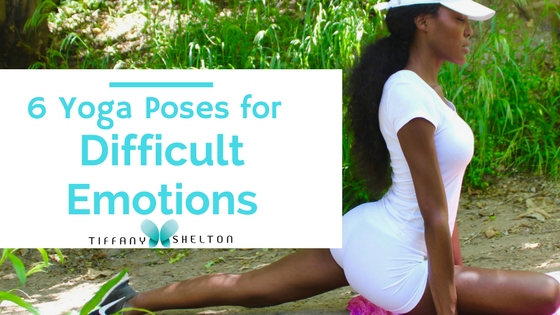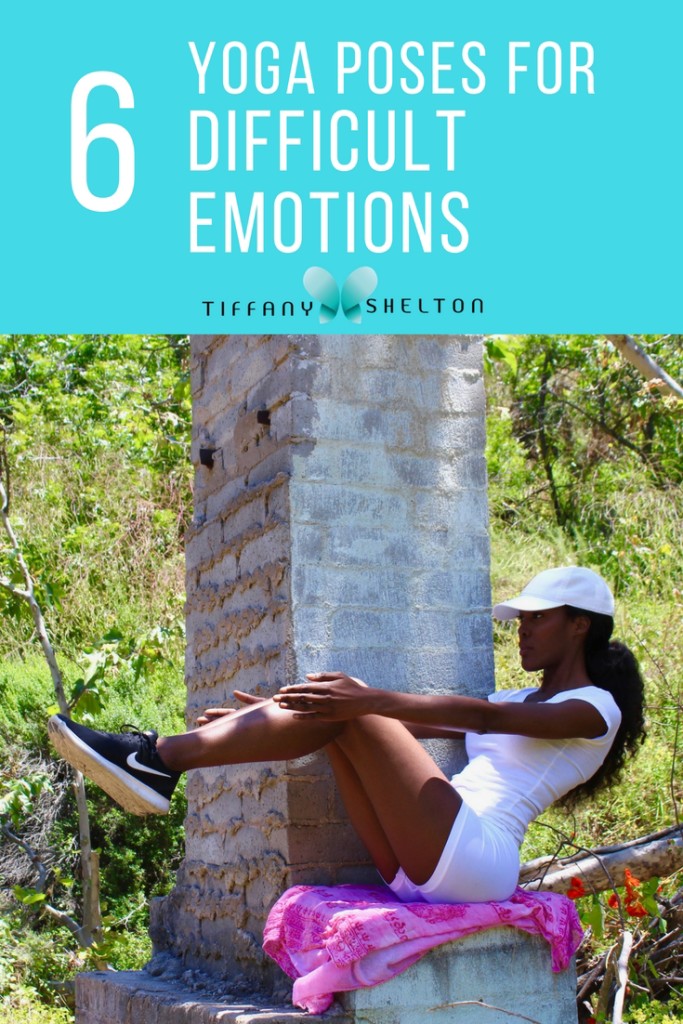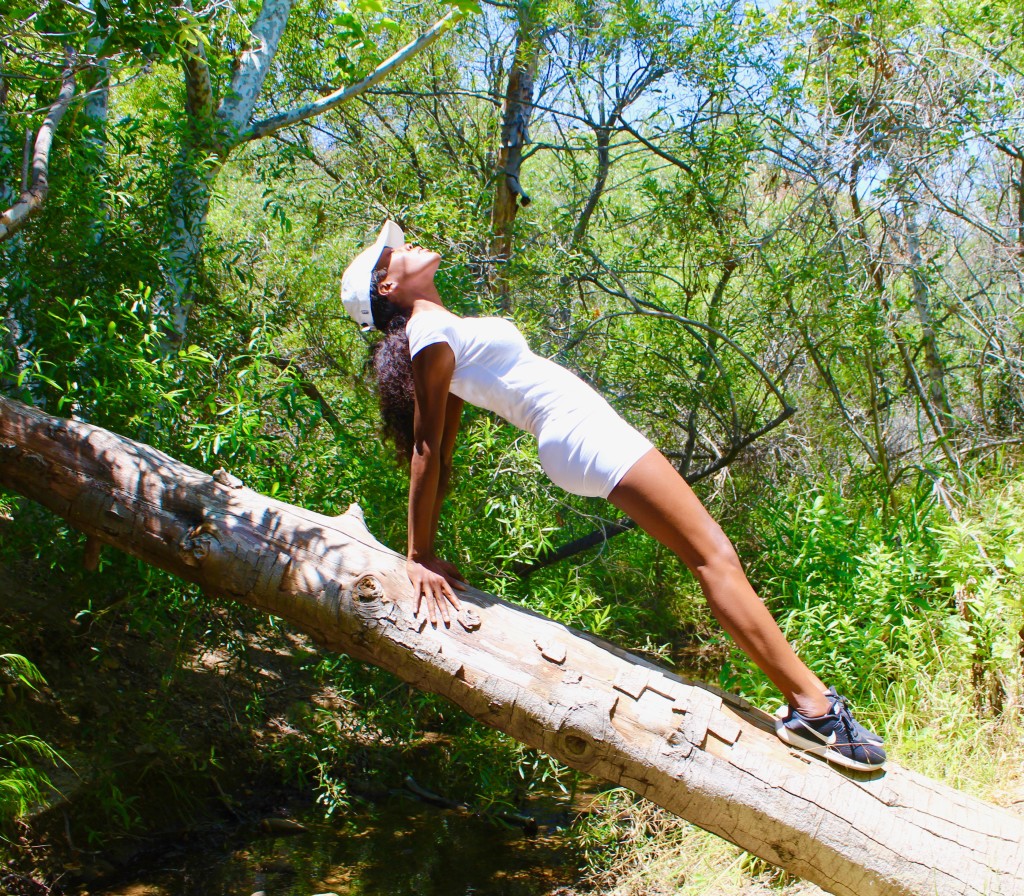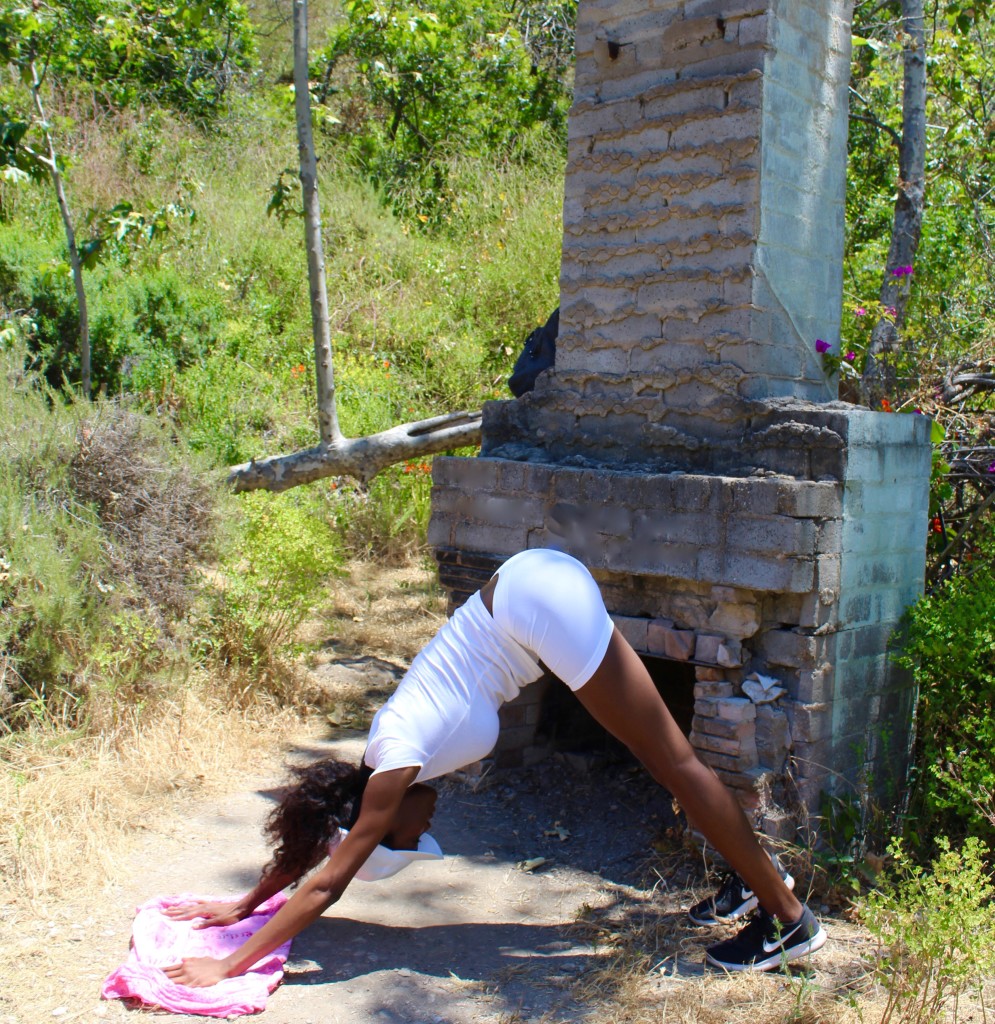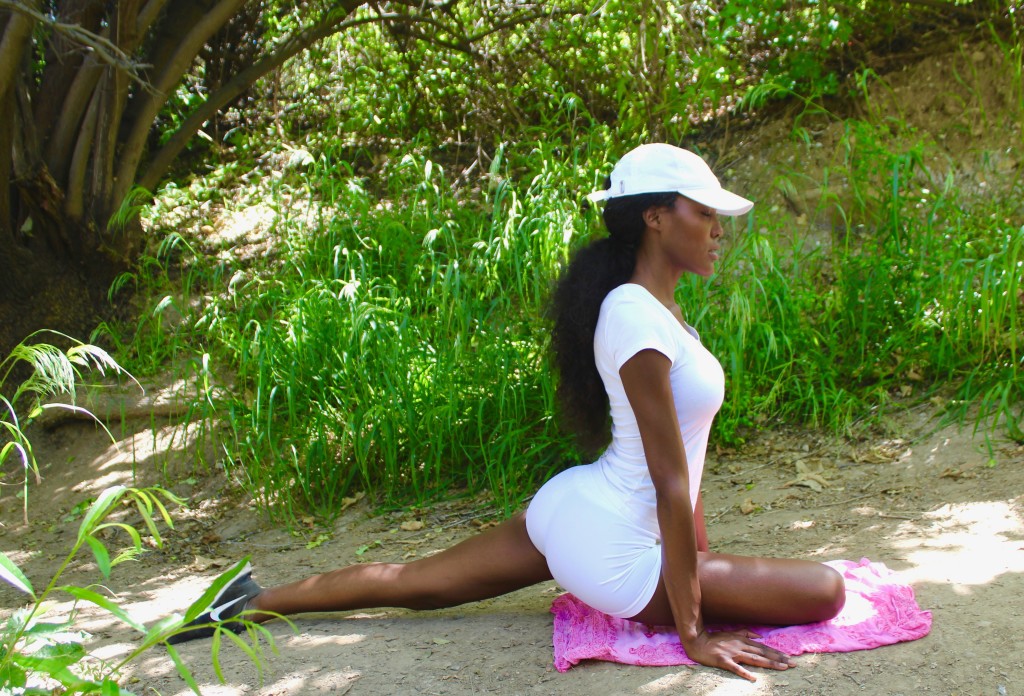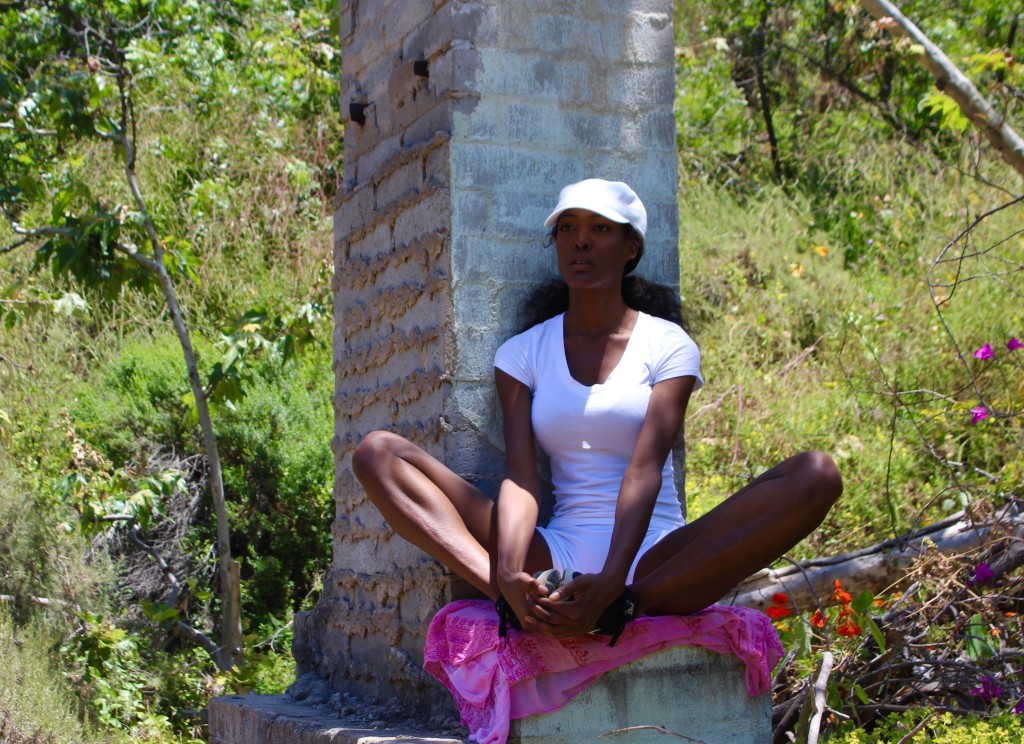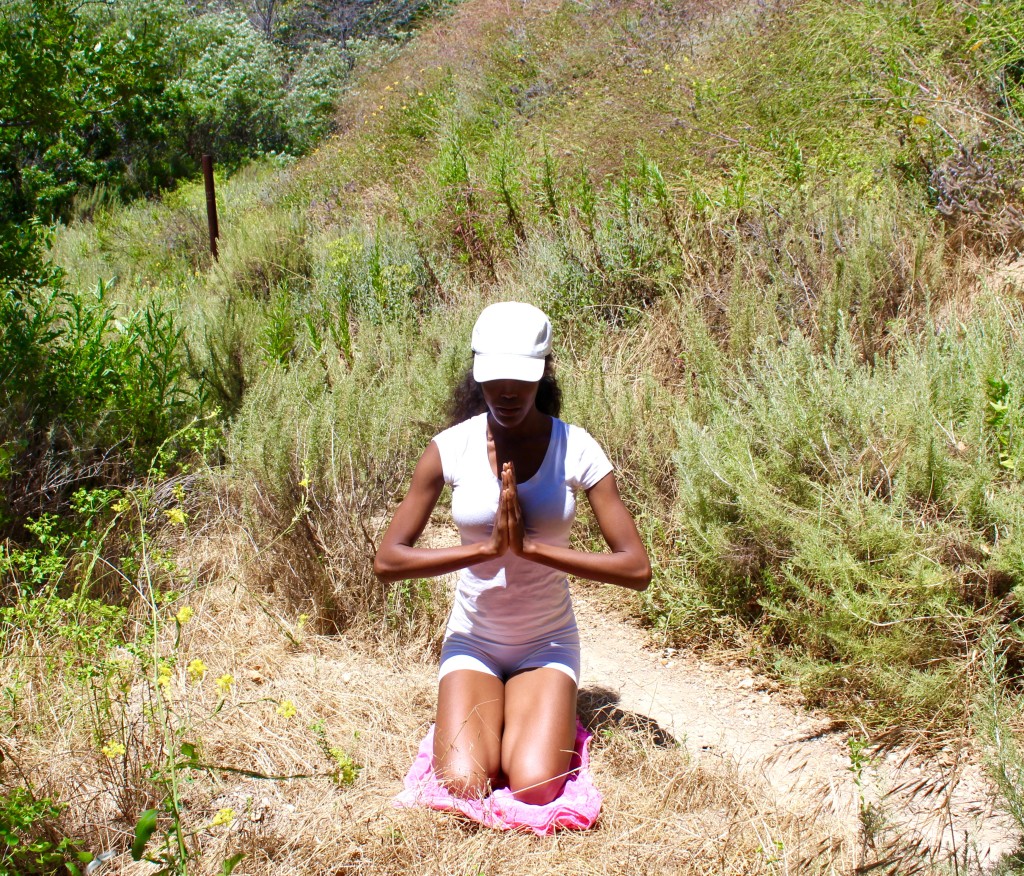6 Yoga Poses for Emotional Balance
“Emotion is the chief source of all becoming conscious. There can be no transforming of darkness into light and of apathy into movement without emotion.” – C.G. Jung
You likely agree with me that dealing with difficult emotions like sadness, anger, and angst can impact our lives and well-being. Emotions, like everything, must be made conscious. Only then can we take control and process our emotions. This is where yoga comes into play. I am going to give you 6 easy yoga poses that you can start doing today to deal with difficult emotions.
Why does this matter?
Yoga is a powerful tool that helps us become present with our emotions. It allows us to face our emotions in a safe way, and mindfully process what they have come to teach us. Yoga can help you process emotions but how so depends on where you stand on the second chakra spectrum.
I can’t emphasize this enough:
In order to know what yoga poses will be best for YOU, you should start by checking in with your second chakra. Are you deficient in your emotional expression, overly rigid and perhaps experience a lot of guilt? Or are you excessive in your second chakra energy, controlled by your emotions, and perhaps overly sensitive? Knowing more about how you face emotions in the present moment will help you decide which yoga poses are most appropriate. To learn more about the second chakra, read my blog “Feeling some type of way? You may need to balance your second chakra”.
Science is Catching on to the Benefits of Yoga
Science supports the notion that yoga is a quick and simple way to address emotional pain. A recent study found that hatha yoga benefitted executive function and mood. In 2016 researchers Kimberly Luu and Peter Hall conducted a study testing participants executive functioning skills and subjective mood before and after hatha yoga and meditation. They found that hatha yoga (as well as meditation) significantly increased participants ability to pay attention, concentrate, and use inhibitory control. Furthermore, these effects were most significant 10 minutes after yoga compared to only 5 minutes after, suggesting the effects are long lasting and consolidate with more time. This study also confirmed hatha yoga and meditation significantly improved mood, which is consistent with many other studies on mindfulness and mood (Luu & Hall, 2016).
Yoga has also been shown to be a great additive to traditional treatment of depression. In fact, when combined with usual treatment, a recent Australian study found that those whom participated in a 6 week yoga program and had a more significant decrease in depressive symptoms than those that just had regular treatment for their depression (i.e therapy and medication) (Manicor, et al., 2016).
That’s Not All
There are also many emotional problems that manifest in our body, for which yoga is a great option to help process such emotional pain. I believe somatoform disorders treatment occur when stress, and an overflow of the stress hormone cortisol, converts emotional stress and pain into physical pain. This happens from constant experiences of stress that one does not have the resources (time, coping skills, freedom, culture, or experience, access to mental healthcare) to emotionally process, and therefore the body is constantly exposed to stress and takes on the symptoms of the emotional pain. There is much brain science on cytokines in the body that details the exact route that this happens in the body as well.
Therefore yoga, a practice that connects the mind and body, is great for those that experience symptoms of emotional pain through the body such as those with chronic back pain, fibromyalgia, frequent nauseas, irritable bowel syndrome, frequent headaches, dizziness, and fatigue. Support for the use of yoga with somatoform disorders comes from another recent study published in the Journal of Health Psychology and Medicine. In this 2016 study, participants with somatoform disorder participated in a one hour per day yoga program and were checked for pain levels and physical symptoms after 2, 6, and 12 weeks. Researchers found that participants had significant improvements with their pain symptoms and the study yields promising results that yoga is an effective alternative to medication for those suffering from this disorder (Sutar, Desai, Varambally, and Gangadhar, 2016).
So how can YOU actually use this?
So we know yoga is a great tool to help us process difficult emotions and events in our lives. But that then begs the question, “What are the best yoga poses when we are dealing with difficult emotions?” I would like to answer that question using the chakra system that I mentioned above. The second chakra is the storehouse of emotions and the symbolic element is water. Fluid, like our emotions, it is our job to contain the energy of the second chakra without restricting it. When our second chakra is in balance we find ways to truly feel gratified by facing our emotions, containing them, and working with them to flow freely.
Here’s the deal
Using the mind body connection, yoga allows us to focus on the body parts associated with the second chakra (hips, pelvis, reproductive systems, low back, genitals, kindneys, and urinary bladder), which innately tap into feelings of gratification, pleasure, shame, guilt, and sadness. Flowing like the ocean, the fluidity of the hips and lower back embodies the flow of emotions. Tapping into whatever emotions arise from connecting with this part of bodies helps to process them in a contained and manageable way. A helpful metaphor is to think of the pelvis and hips as a bowl that must be balanced upright to contain the flowing energy of the second chakra. Tip it forward too much and the over exertion will cause issues like low back and hip pain and feeling emotionally depleted. Tilt it backward too much and you will close the container, leaving it unable to experience the pleasure of the flowing water.
Emotions don’t have to interrupt your grinding. You can finds ways to contain them and use them to support your hustle and happiness.
Below I will give you SIX yoga poses you can begin doing right now that will help you do just that. Here is a step by step guide to using yoga to deal with difficult emotions!
ONE: Supine Plank (Purvottanasana)
The first three poses are stabilizing poses, great for those that find themselves overly emotional and are seeking ways to deal with an overflow of emotions. The supine plank pose is a closed hip pose, symbolizing containment and healthy emotional boundaries.
Embodying this pose will
- Activate your third chakra ego strength in order to hold the flowing, emotional energy in your hips.
- This pose also asks us to confront our addiction to pleasure and avoidance of suffering. This is done by holding this pose for at least 45 seconds (or working your way up to this amount in the beginning) and practicing sitting with discomfort.
- Take note of your ability to tolerate discomfort and suffering. Notice how you persevere and how the discomfort did not kill you.
- This will cultivate an ability to better deal with negative emotions, tolerating them without feeling overwhelmed by them.
Here’s how to do it:
- Start seated with your legs straight out in front of you and your palms on the ground by your hips, with fingertips facing forward.
- Plant both feet on the ground, while also pushing into your feet and hands and lifting your hips to the sky.
- Slowly allow your neck to lengthen and tilt your head back.
TWO: Seated Boat (Paripurna Navasana)
The second stabilizing pose is seated boat pose. Because this pose naturally closes the hips and pelvis, it also embodies emotional containment. Just sustaining this pose requires self-control that builds character and strength.
- Named after a boat, the perfect companion to the flowing ocean of our emotions, this pose teaches us to sit with emotions without becoming them.
- This pose also helps us learn to ride the wave of emotions, using them to propel us forward.
- Try working your way up to holding this pose for 30 seconds, and explore what this pose has to teach us.
Here’s how to do it:
- Start seated with knees bent and feet on the ground.
- Place hands under the knees, and raise your feet so that your shins are parallel to the ground.
- Release your grasp and extend your arms out in front of you.
- Remember to tuck your tailbone and keep your spine straight as you gaze forward.
THREE: Downward Facing Dog (Adho Mukha Svanasana)
The final stabilizing pose I will offer is downward facing dog. This pose has an insane ability to calm us down and help us recenter effortlessly. With the heart above the head, this pose offers stabilization and is associated with refuge. Recently I was giving an oral presentation and found myself full of nervous energy before my talk. I took 2 minutes to practice downward facing dog, and it was like all my anxiety melted away.
- This is also great pose if you are dealing with obsessive attachment to how you think things in your life should be.
- This sort of attachment causes suffering, and embodying downward facing dog helps us become intimate with the sensation of letting everything go.
Here’s how to do it:
- Start on all fours in table top position.
- Tuck your toes under and lift your hips up and back as you push the ground away with your palms.
- Stay active in this pose by pushing your heels towards the ground.
FOUR: Pigeon (Kapotasana)
The last three poses I will offer are hip opening poses and are great for those that are deficient in their second chakra. This particular hip opener is great for those seeking to get in touch with their emotions in a safe way. As such it is particularly well for those of us that tend to repress our emotions or experience many somatization symptoms.
- I remember doing this pose at a particularly busy time in my life when I wasn’t taking the time to check in with how I was feeling emotionally, and I had the most cathartic emotional expression of pain while sitting in this pose for an extended period on each side (7 minutes).
- Also, this pose is easily modifiable by adjusting the angle of the front shin. As you bring the foot towards you, you will decrease the pressure on your knee.
Here’s how to do it:
- Start in downward facing dog (see above) and lift the right leg up to sky behind you.
- Swing the leg forward, bringing the right knee to meet the right wrist and rest your right foot down. Keep the right foot flexed to protect the knee.
- Adjust your right shin working it towards being parallel with the front of your mat.
- Extend your pointed left foot back, and rest the left knee to the ground.
FIVE: Bound Angle Butterfly (Baddha Konasana)
This yummy hip opener reacquaints us with pleasure, and embodies safe emotional expression. If you are more rigid when it comes to emotional expression, this pose can help you open up.
- If you have experienced sexual trauma, like with any hip openers, you should use caution and mindfulness if you choose to explore this pose.
- A safe way to gently explore this pose is to start practicing it without putting any pressure on the legs or forcing them to go down. Work with the natural weight of your legs until you feel more comfortable opening up more.
Here’s how to do it:
- Start seated with your knees up and feet flat on the ground.
- Slowly bring the bottoms of your feet to together and grab the tops of your feet.
- Allow the knees to gently fall to either side, as you maintain a straight spine and tucked tailbone.
SIX: Hero (Vajrasana)
On bended knee, not only does this kneeling pose set you up for prayer, but it opens your hips in the most containing way. This is a great way for those of you struggling with opening to your emotions.
- A dignified and sacred pose, try this one especially when you need emotional insight.
- Embodying this pose helps us learn the art of flexibility. As you sit in this pose, notice how you mentally and physically work through tightness that you will likely experience in the top of your feet.
Here’s how to do it:
- Kneel coming to a seated position with knees bent, and the tops of your feet on the floor.
- Bring the thighs together and press the shins and feet into the ground to activate the pose.
- Bring hands into prayer position for added reverence.
The Best Part…
Look, the bottom line is the mind-body connection is a powerful tool that we have free access to at any time. And using these poses adequately doesn’t require a whole yoga class to reap the benefits either. The next time you feel emotionally imbalanced, pick one of the poses above based on your second chakra energy. Take a mindfulness moment to try the pose and recenter your emotional energy.
Your emotions are like a vast, flowing ocean, and it is your job to flow with them in a containing way versus fighting against the tide or being drowned by our emotions. Find ways to get in touch with your emotions and use them to align with your destiny and purpose in the world.
– Tiffany Shelton, M.A. is a conscious lifestyle blogger and training to become a neuropsychologist in Los Angeles, CA. Her passion to elevate consciousness incorporates brain science, psychology, and spiritual philosophies. Her writing goes beyond the message of self-care or wellness, but instead consciously adds to these movements by demanding awakening and insight. Learn more about Tiffany Shelton by clicking here.
Sign Up for the Conscious Lifestyle Newsletter for a Dose of Consciousness Straight to Your Inbox!
Click Here
Good luck using these poses to deal with difficult emotions, and I hope they help you find emotional balance.
References:
- Anodea (1996). Psychology and the chakra system as a path to the self. Place of publication not identified: Celestial Arts.
Luu, K., & Hall, P. A. (2016). Examining the acute effects of hatha yoga and mindfulness meditation on executive function and mood. Mindfulness, doi:10.1007/s12671-016-0661-2
de Manincor, M., Bensoussan, A., Smith, C. A., Barr, K., Schweickle, M., Donoghoe, L., & … Fahey, P. (2016). Individualized yoga for reducing depression and anxiety, and improving well‐being: A randomized controlled trial. Depression And Anxiety, 33(9), 816-828. doi:10.1002/da.22502
Sutar, R., Desai, G., Varambally, S., & Gangadhar, B. N. (2016). Yoga-based intervention in patients with somatoform disorders: An open label trial. International Review Of Psychiatry, 28(3), 309-315. doi:10.1080/09540261.2016.1188785

